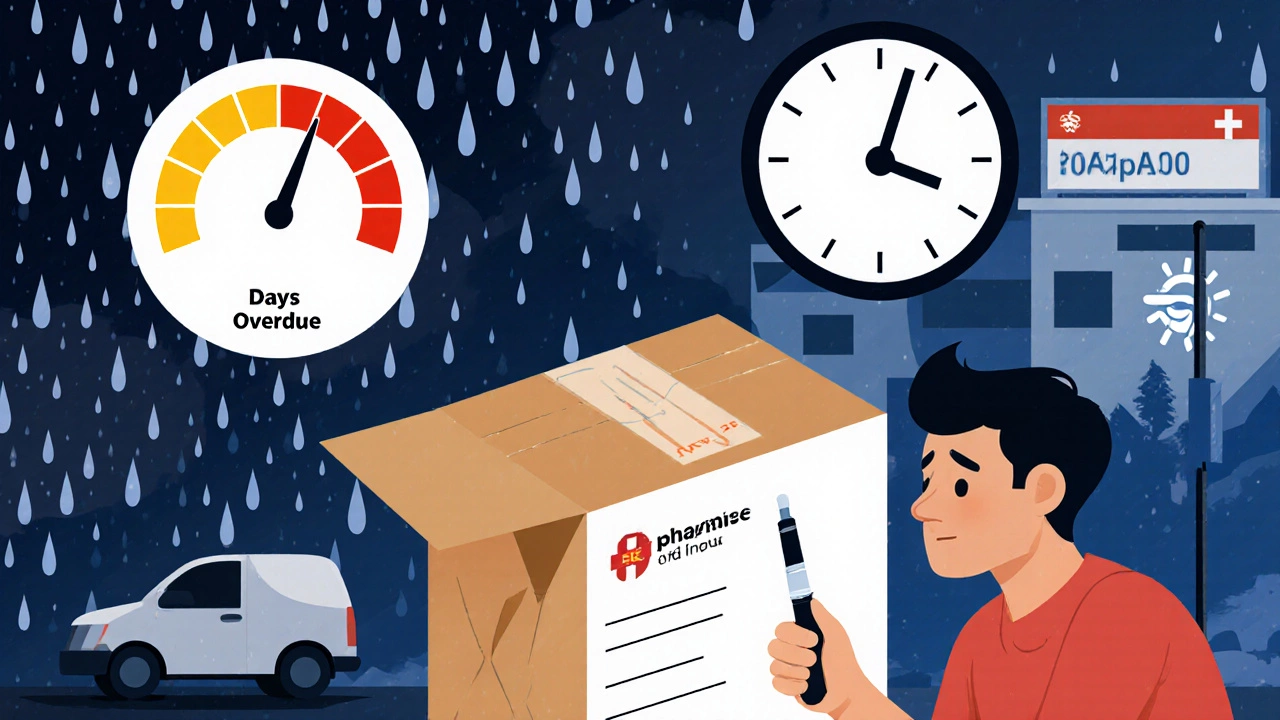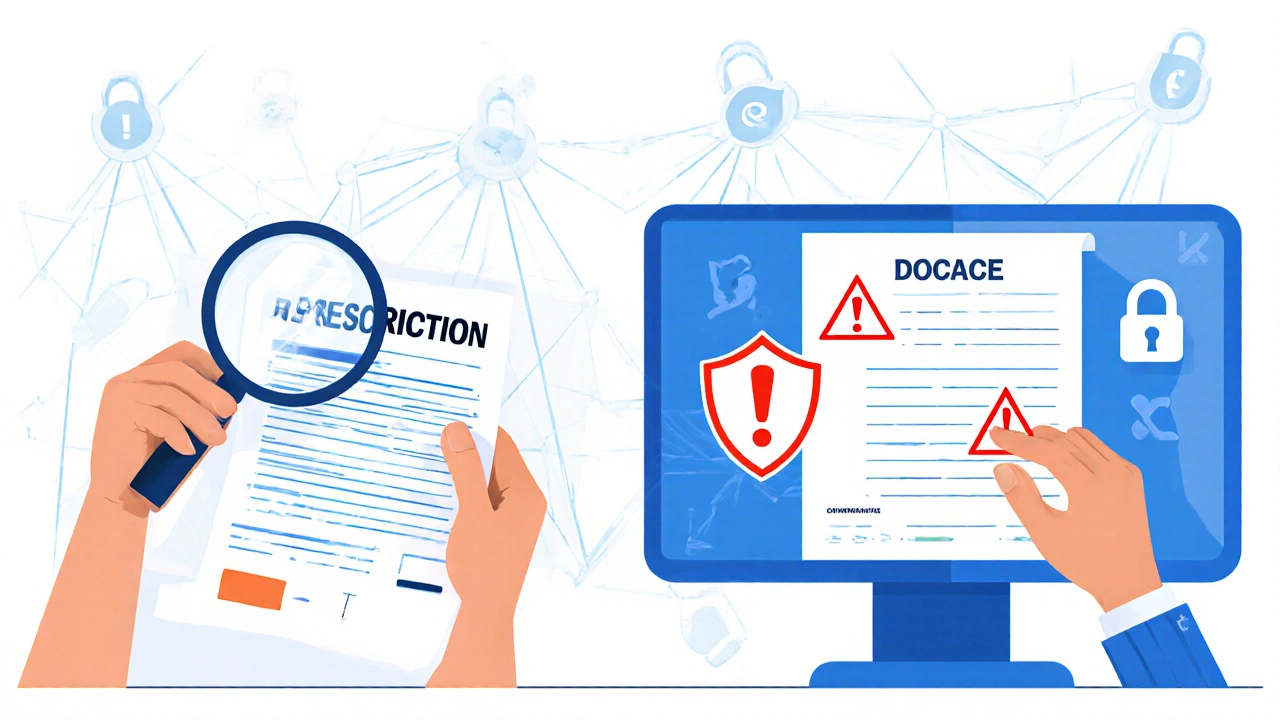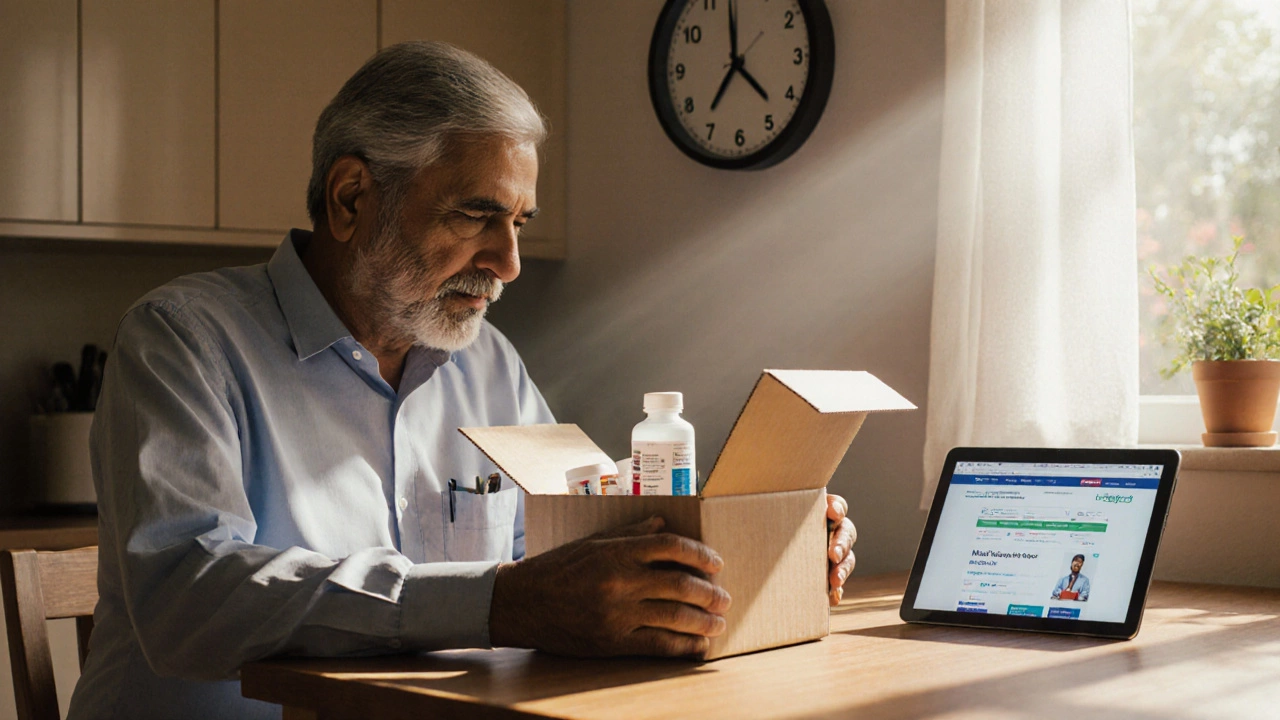Mail-Order Pharmacy Reliability Checker
How Reliable is Your Mail-Order Pharmacy?
Use this tool to evaluate a mail-order pharmacy based on the six key safety criteria from the article. Enter your answers to determine reliability level and get personalized recommendations.
When you hear the phrase mail-order pharmacy disadvantage, the first thing that comes to mind is convenience gone wrong. Ordering meds online sounds like a time‑saver, but hidden pitfalls can turn a simple refill into a headache. Below we break down the most common drawbacks, why they matter, and what you can do to protect yourself.
How a Mail‑Order Pharmacy Works
Mail-order pharmacy is a service that fills prescriptions remotely and ships the medication directly to a patient’s address. After a doctor sends a digital prescription, the pharmacy verifies it, packages the drugs, and hands them off to a carrier. The model promises lower costs, bulk‑ordering discounts, and the luxury of refilling meds without stepping out of the house.
Disadvantage #1: Shipping Delays and Lost Packages
Unlike a traditional pharmacy where you pick up meds in minutes, mail‑order relies on third‑party couriers. Weather events, customs holds, or simple logistics errors can delay delivery by days or even weeks. A missed dose, especially for chronic conditions like hypertension or epilepsy, can have serious health consequences.
Real‑world example: a diabetic patient in Pune missed a critical insulin delivery due to a regional strike, forcing an emergency hospital visit and extra out‑of‑pocket costs.
Disadvantage #2: Temperature‑Sensitive Medication Risks
Some drugs, such as biologics, vaccines, and certain antibiotics, require strict temperature control. During transit, packages can be exposed to heat or cold, degrading their efficacy. Mail‑order pharmacies often flag these meds as "temperature‑sensitive," but the handling chain isn’t always airtight.
Studies from the FDA in 2023 showed that about 12% of temperature‑sensitive shipments experienced temperature excursions, rendering the meds less potent.
Disadvantage #3: Prescription Verification Errors
The prescription verification process is a critical safety step. In a remote setting, pharmacists may rely on scanned images or electronic files, increasing the chance of misreading dosage or drug interactions. Mistakes can lead to over‑dosage, under‑dosage, or harmful drug combinations.
A 2022 audit of 10 major mail‑order chains found a 0.8% error rate in dosage verification-higher than the 0.2% rate seen in brick‑and‑mortar pharmacies.

Disadvantage #4: Privacy and Data‑Security Concerns
Ordering meds online means sharing personal health information (PHI) over the internet. If the pharmacy’s portal isn’t secured properly, data breaches can expose your medication history, insurance details, and even financial information. A 2024 breach at a popular online pharmacy exposed records of over 2 million users.
Under HIPAA regulations, pharmacies must protect PHI, but enforcement can be uneven, especially for smaller players operating across state lines.
Disadvantage #5: Regulatory and Insurance Complications
Each state in the U.S. (or each region in India) has its own pharmacy laws. A mail‑order service that operates nationally may run into state regulations that restrict certain drug classes or require local pharmacist counseling. If the pharmacy isn’t fully licensed in your state, the prescription could be deemed invalid, causing delays or denial of coverage by insurers.
Additionally, many insurance plans negotiate directly with local pharmacies. Using a mail‑order service might mean higher out‑of‑pocket costs if your plan doesn’t cover the mail‑order network.
Disadvantage #6: Counterfeit or Substandard Drugs
Because the supply chain is longer, there’s a greater chance that a counterfeit or substandard drug could slip in. While reputable mail‑order pharmacies source from licensed distributors, some lesser‑known services source internationally without rigorous verification, increasing the risk of fake medications.
The World Health Organization estimates that up to 10% of medicines in low‑ and middle‑income countries are counterfeit-a figure that can rise when the distribution path lengthens.

How to Mitigate These Downsides
- Choose a pharmacy that is accredited by the National Association of Boards of Pharmacy (NABP) or equivalent local authority.
- Check delivery estimates and opt for expedited shipping if you need time‑sensitive meds.
- Confirm that temperature‑sensitive drugs are shipped with insulated packaging and a temperature tracker.
- Review the pharmacy’s privacy policy and look for HTTPS, two‑factor authentication, and regular security audits.
- Verify that the pharmacy holds a valid license in your state or region.
- Cross‑check medication batch numbers with the manufacturer’s verification portal.
Quick Checklist Before You Order
- Is the pharmacy NABP‑verified or equivalent?
- Does it clearly state its licensing jurisdiction?
- Are shipping times realistic for your medication’s urgency?
- Do they use temperature‑controlled packaging for sensitive drugs?
- Is your personal health data encrypted and stored securely?
- Does your insurance plan cover the mail‑order network?
- Can you trace the drug’s source back to a licensed distributor?
Frequently Asked Questions
Can I rely on mail‑order pharmacies for life‑saving meds?
Yes, if you pick a reputable, accredited service and verify temperature control. For critical meds like insulin, consider a hybrid approach-order in bulk but keep a small emergency supply locally.
What should I do if my package arrives late?
Contact the pharmacy’s customer support immediately. Most reputable services have a contingency plan, such as re‑shipping at no extra cost or providing a temporary supply.
Are mail‑order pharmacies covered by my health insurance?
It depends on your plan. Check your insurance’s pharmacy benefits booklet or call the provider to confirm if the mail‑order network is included.
How can I verify a medication isn’t counterfeit?
Look for batch numbers on the label and use the manufacturer’s verification website. Reputable mail‑order pharmacies also provide a QR code that links to a verification page.
Is my personal health data safe with online pharmacies?
Choose services that use end‑to‑end encryption (HTTPS), store data on secure servers, and comply with HIPAA or local data‑privacy laws. Regularly update your passwords and enable two‑factor authentication.





